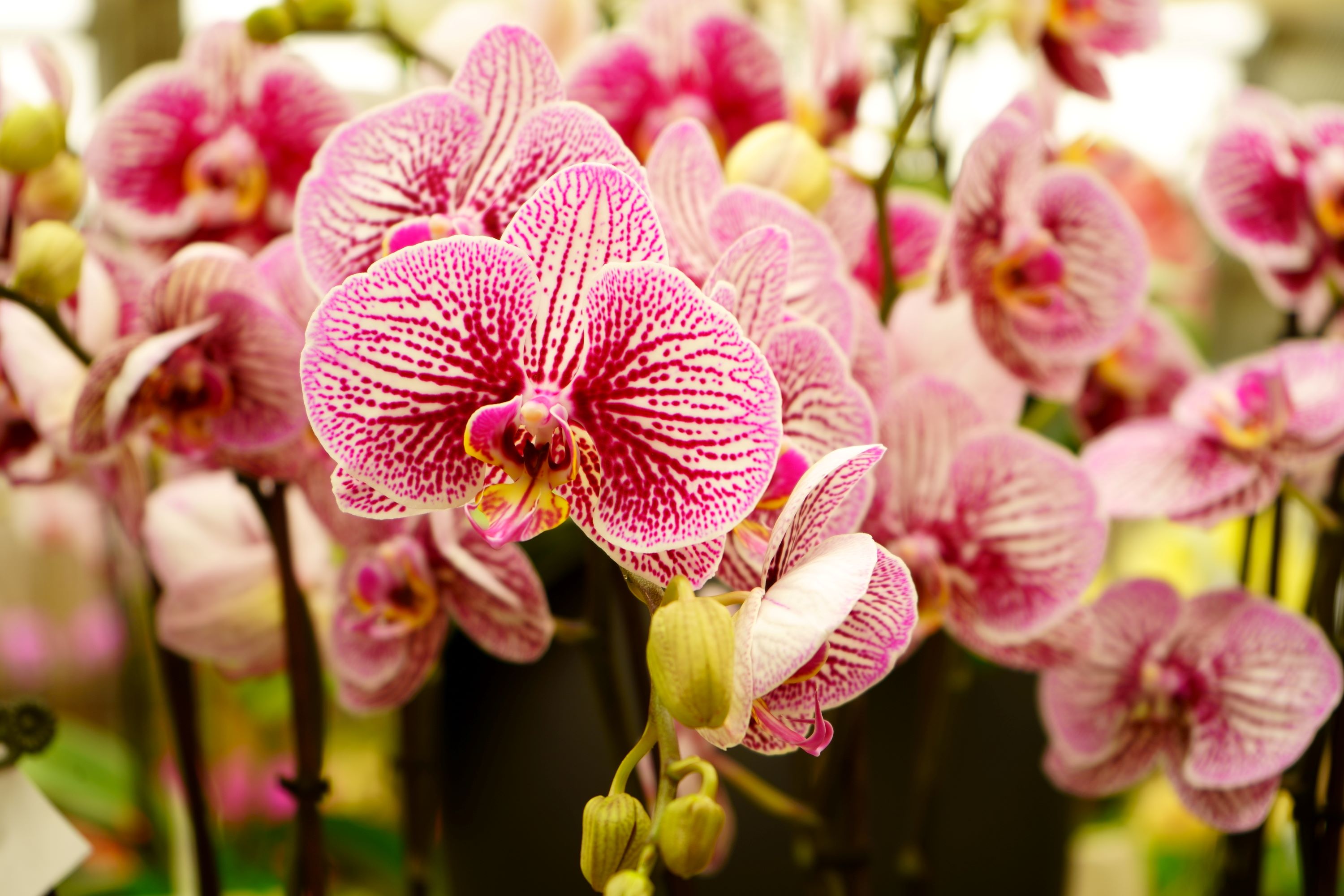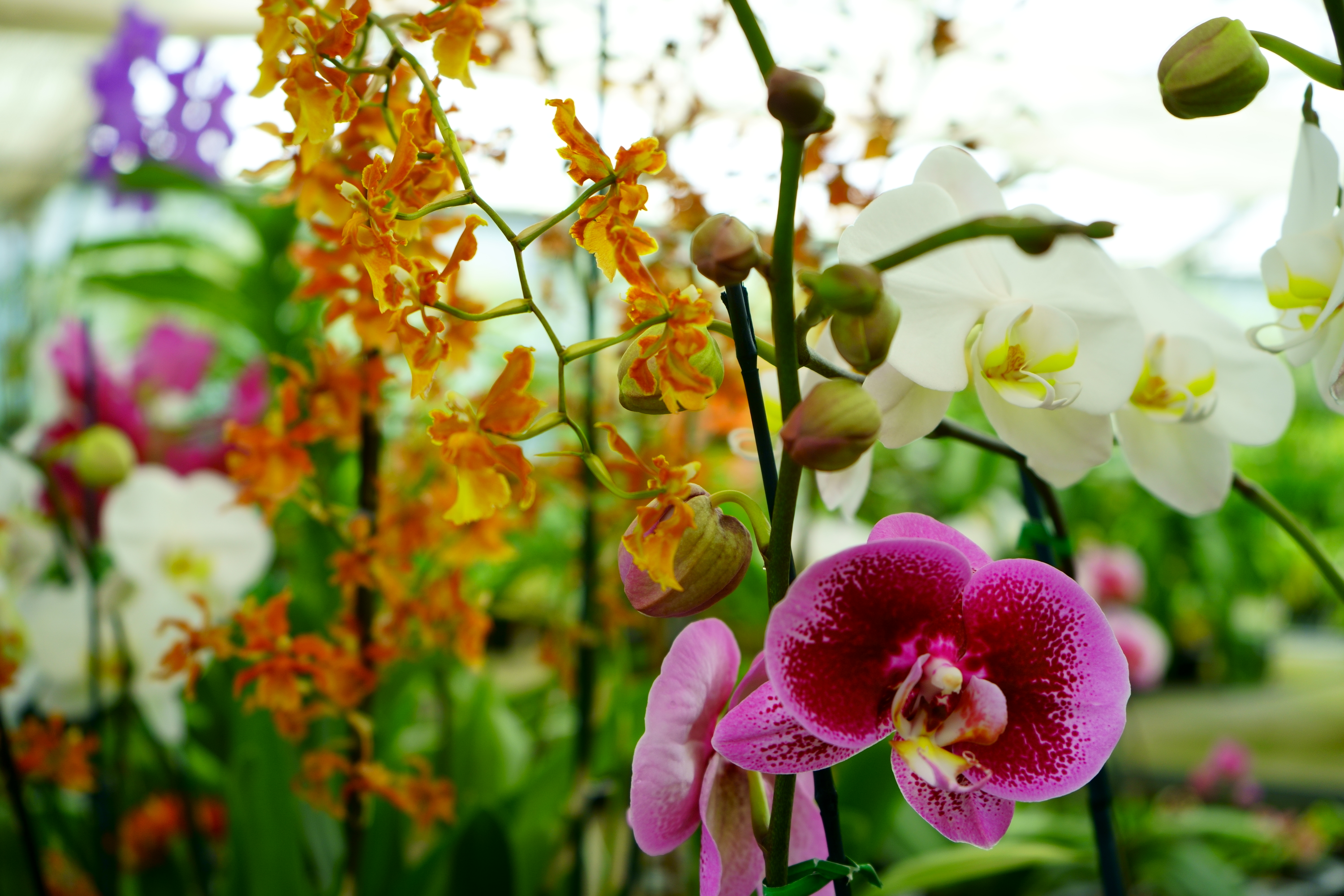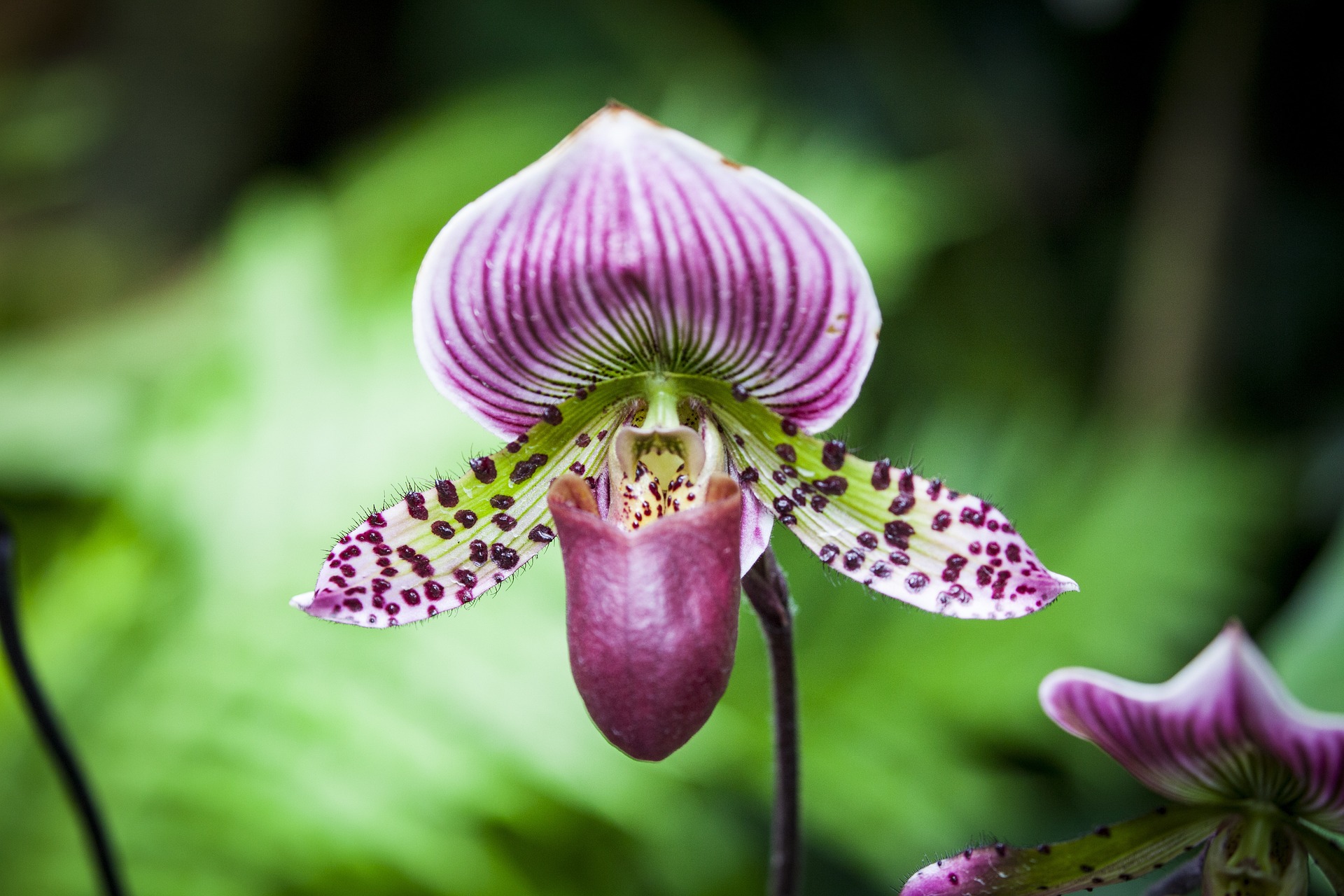- Home
- Fertilizing
- Healthy Orchid Roots
Healthy Orchid Roots: The Complete Care Guide for Vibrant Plants
Healthy orchid roots are the foundation of a thriving orchid. Without strong, robust roots, your plant can’t absorb water, nutrients, or even produce those stunning labyrinthine flowers we all love. Whether you’re growing Phalaenopsis, Cattleyas, or Vandas, understanding how to maintain healthy orchid roots is the key to long-term success.
In this guide, we’ll cover everything you need to know about healthy orchid roots, including:
- Choosing the best growing medium for strong, healthy orchid roots
- Watering techniques that prevent root rot and dehydration
- Fertilizing correctly to nourish healthy orchid roots
- How to monitor roots for early signs of trouble
- Step-by-step repotting to maintain healthy orchid roots
Plus, we’ll share product recommendations and link to our in-depth guides for even more orchid care secrets.
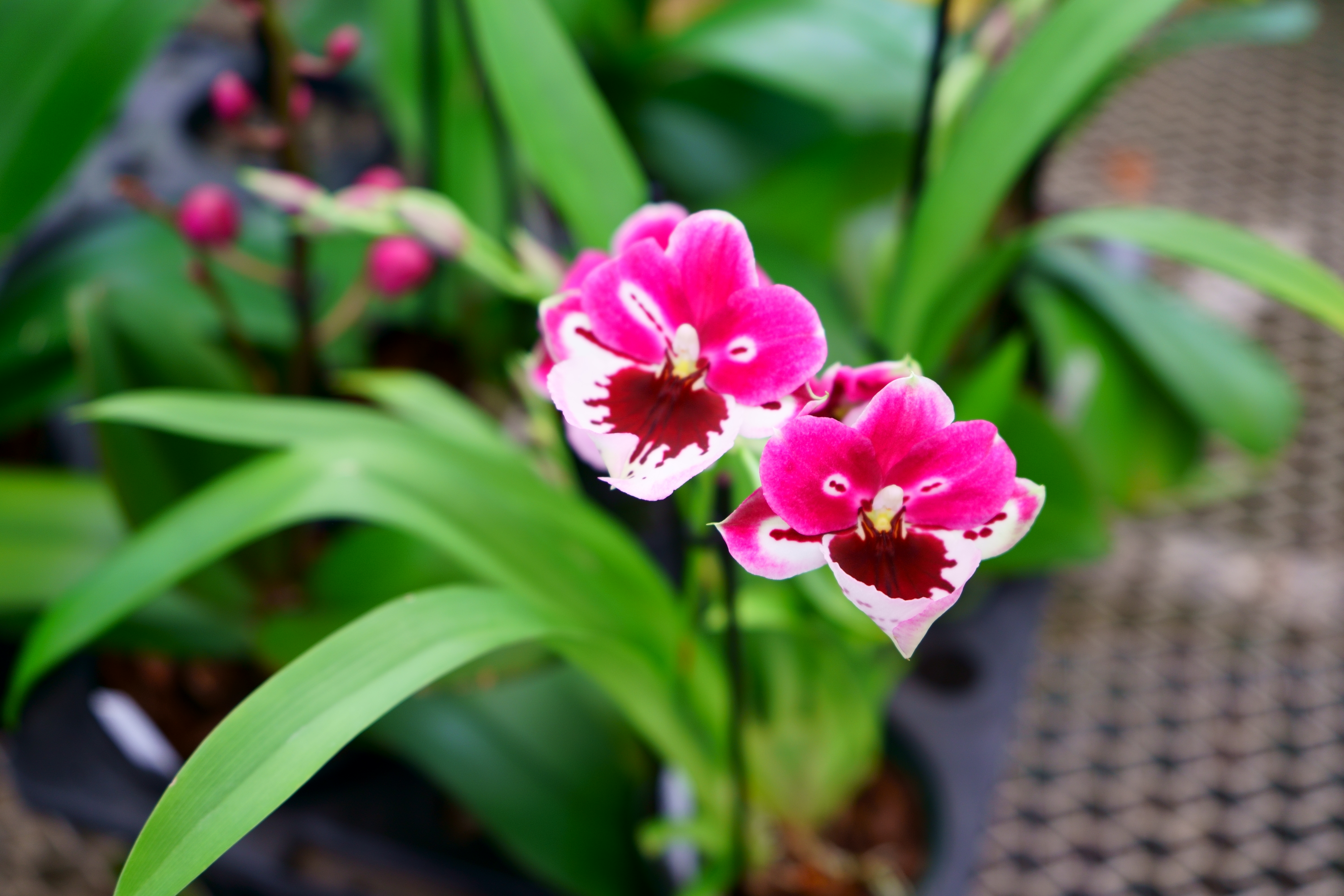
Heavenly Orchids participates in affiliate marketing programs, which means we may earn commissions on qualifying purchases made through our links. We only recommend products we genuinely believe in. Thank you if you use our links, we really appreciate it.
Grow Thriving Orchids! Sign Up for Exclusive Care Tips & Tricks!
Why Healthy Orchid Roots Matter
Healthy orchid roots are essential because:
- They absorb water and nutrients
- They help with photosynthesis (yes, orchid roots can photosynthesize!)
- They anchor the plant securely
In nature, epiphytic orchids absorb moisture from dew, mist, and rainfall, while nutrients come from:
- Decaying leaves
- Animal droppings
- Minerals leached from tree bark
- Other organic matter
This explains why orchids don’t need traditional soil—they’ve evolved to thrive without dense growing mediums. In fact:
- Many can be mounted bare root outdoors on branches/logs if you live in a warm climate with high humidity.
- Vandas especially thrive bare-rooted or with large charcoal chunks for airflow.
- Some growers even use full water culture successfully.
Types of Orchid Roots
- Epiphytic Roots (e.g., Phalaenopsis) – Need airflow and drainage for healthy orchid roots.
- Terrestrial Roots (e.g., Paphiopedilums) – Prefer moisture-retentive but well-draining mixes.
- Lithophytic Roots (e.g., some Dendrobiums) – Thrive in rocky, well-aerated setups.
See this guide for help in choosing the best potting medium for orchids.
The Best Growing Mediums for Healthy Orchid Roots
1.Fir Bark – Ideal for Airflow & Drainage
The right potting mix is critical for healthy orchid roots. Here’s what works best:
- Promotes healthy orchid roots by preventing suffocation.
- Best for: Phalaenopsis, Cattleyas, Oncidiums. For Cattleyas, mix 1:1 with perlite for optimal drainage (as recommended by the AOS).
Recommended Product: rePotme Fir Bark Mix. Perfect for healthy orchid roots.
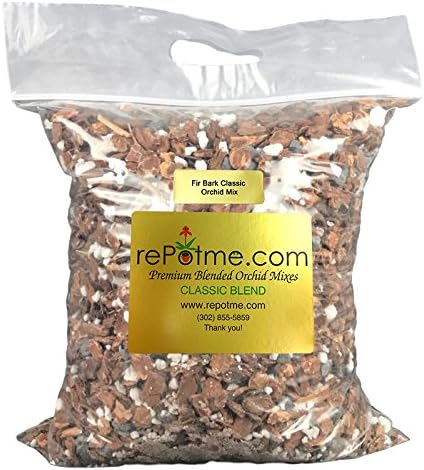
- Perfect aeration for orchid roots
- Naturally pH-balanced & long-lasting
- Premium-grade fir bark
- Ideal for Cattleyas & Phalaenopsis
- Promotes healthy root growth
2. Orchiata Pine Bark – The Premium Long-Lasting Choice
Best for: Orchid growers who want a longer-lasting, high-quality medium for healthy orchid roots.
Pros:
- Lasts 3-5 years (vs. 1-2 years for fir bark).
- Naturally resistant to fungi & bacteria (prevents root rot).
- Perfect aeration & moisture balance for healthy orchid roots.
Cons:
- More expensive than standard fir bark.
- May need pre-soaking before use.
Recommended Product: Daltons Orchiata Pine Bark Professional-grade for healthy orchid roots.
Pro Tip: Ideal for Cattleyas, Phalaenopsis, and Dendrobiums—orchids that thrive in durable, well-aerated mixes.
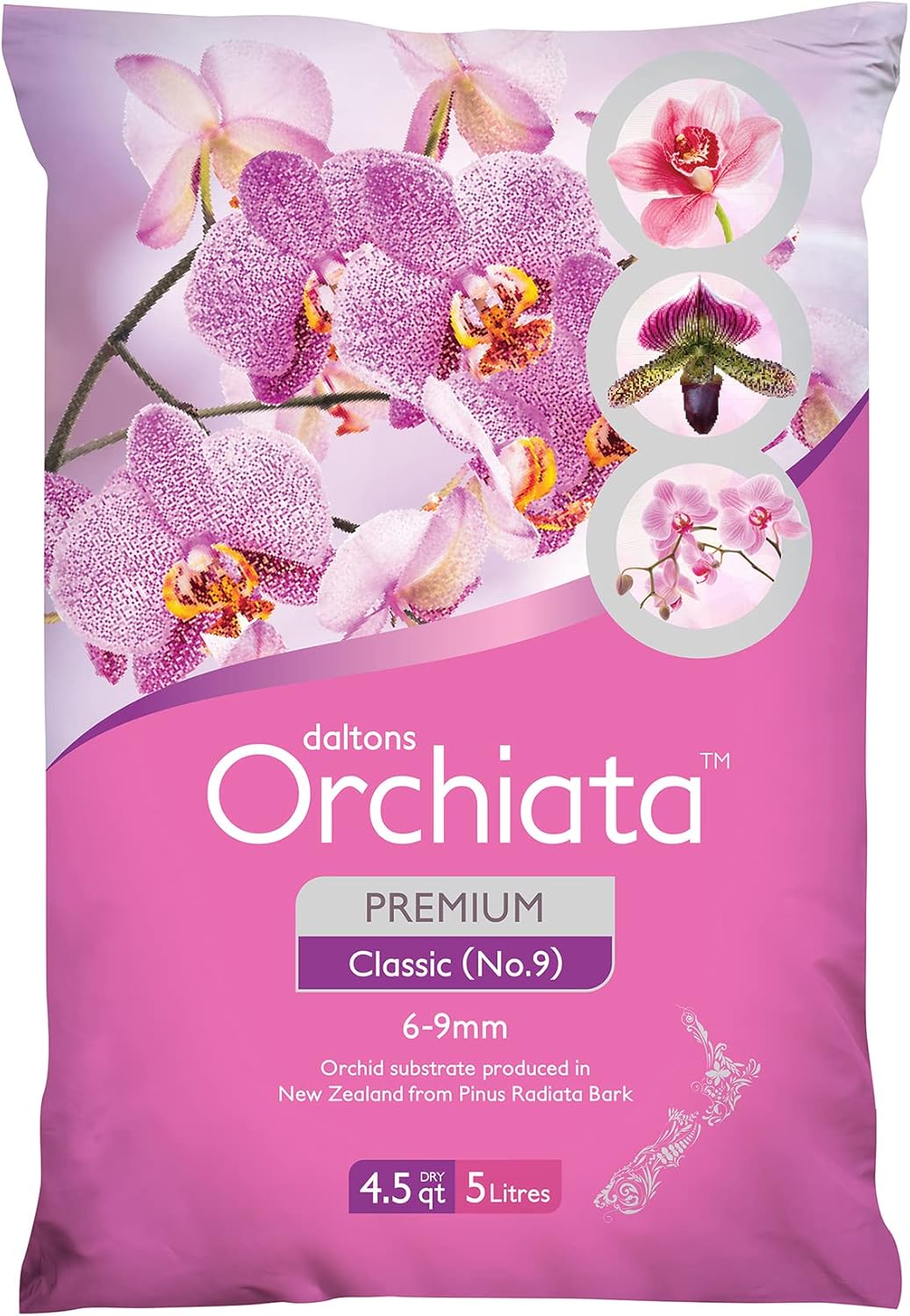
- Lasts 5+ years – no rotting
- Holds moisture & nutrients perfectly
- Toxin-free New Zealand pine bark
- Trusted by professional orchid growers
- Sustainable premium bark – 3 sizes
3. Sphagnum Moss: The Moisture Master for Delicate Roots
Best Uses for Sphagnum Moss
Why sphagnum moss works:
This lightweight, fibrous medium mimics the natural moisture retention of orchid habitats while allowing air pockets for root respiration. The American Orchid Society notes its unique structure helps prevent both overwatering and dehydration—a critical balance for sensitive roots.
Keikis & Seedlings
- Provides gentle hydration for developing root systems.
- Reduces transplant shock compared to bark.
Mounted Orchids
- Wraps easily around roots on cork slabs or driftwood.
- Holds moisture longer in dry climates.
Moisture-Loving Species
- Ideal for Miltoniopsis, Masdevallias, and young Phalaenopsis.
- Helps terrestrial hybrids (like some Paphiopedilums) stay evenly damp.
Pro Tips from AOS Research
- Mix with 20-30% bark (e.g., fine fir or coconut chips) to boost aeration.
- Fluff monthly to prevent compaction - compressed moss suffocates roots.
- Replace annually—it breaks down faster than bark.
Recommended Product: Premium New Zealand Sphagnum Moss (Low-dust, long-fiber, and pH-balanced for orchids.)
**Caution**:
- Avoid packing tightly—roots need airflow.
- In humid climates, use sparingly to prevent rot.

- Long-strand premium NZ sphagnum moss
- Holds 20x weight in water
- Zero chemicals, 100% natural purity
- Orchid & reptile grower favorite
- Sustainably harvested, hand-picked quality
4. LECA (Clay Pebbles) – Prevents Root Rot
- Superior aeration for healthy orchid roots.
- Best for: Semi-hydroponic setups.
Recommended Product: Hydroton Clay Pebbles (Great for preventing root rot).
Check out this article on Semi-Hydroponics for Healthy Orchid Roots.
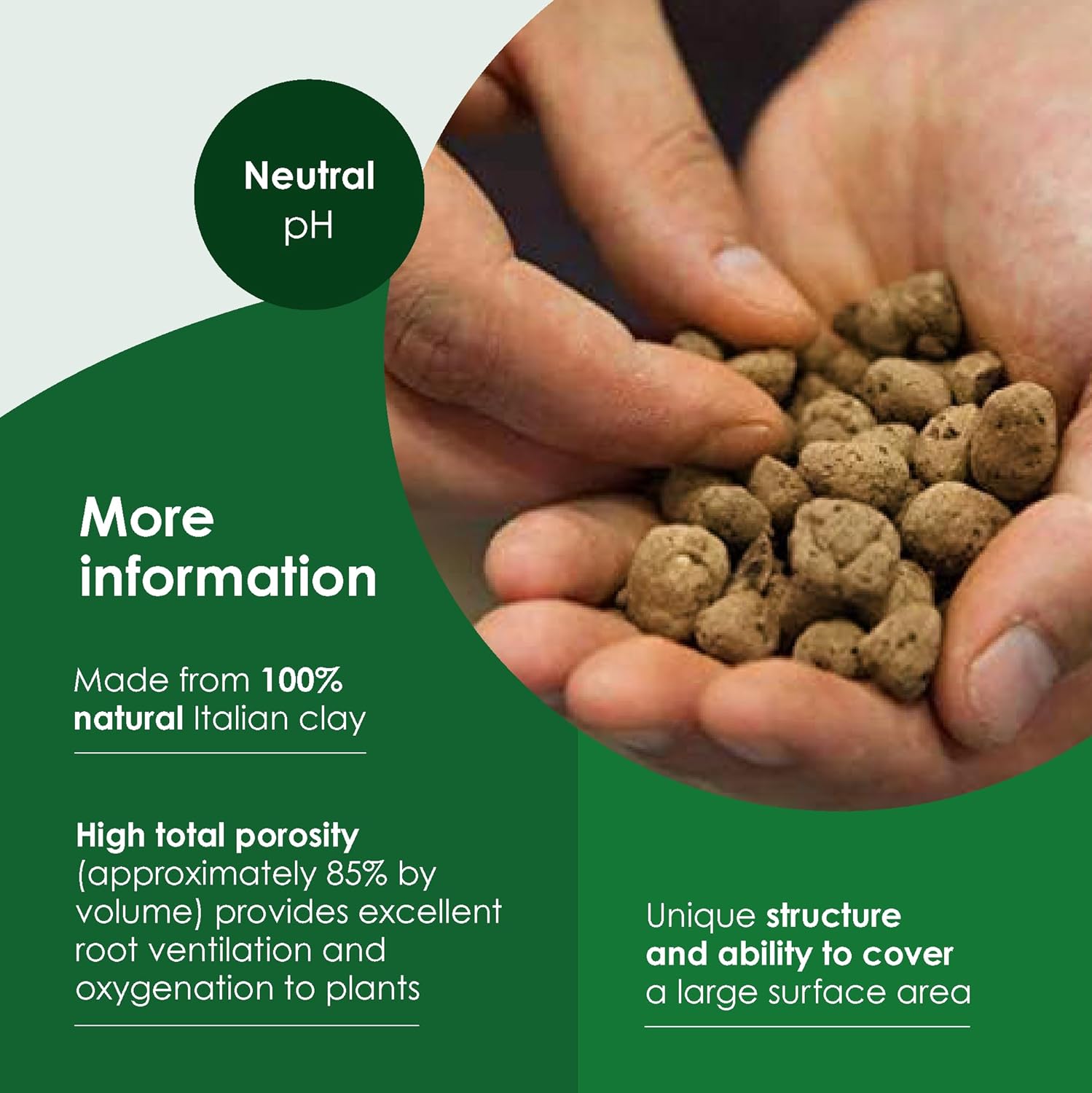
- Perfect hydroponic medium for orchids
- 100% natural pH-stable clay pebbles
- Superior drainage prevents root rot
- Promotes explosive root growth
- Works in all hydro systems
Best Potting Mixes for Healthy Orchid Roots (By Species)
| Orchid Type | Recommended Medium | Special Notes |
|---|---|---|
| Phalaenopsis | Medium-grade Orchiata/fir bark | Add 10% charcoal for hybrids |
| Cattleya | Coarse bark + perlite (AOS recommends 1:1 ratio) | Water only when nearly dry; prone to rot if kept moist |
| Dendrobium | Medium bark or LECA | Phalaenopsis-types like more moisture |
| Paphiopedilum | Fine bark/peat/perlite blend | Keep evenly moist |
| Oncidium | Medium bark + 20% sphagnum | Don't let dry completely |
| Vanda | Large charcoal chunks or bare | Needs maximum air flow |
| Cymbidium | Coarse bark + organic matter | Terrestrial needs |
| Miltoniopsis | Sphagnum-heavy mix | Never let dry out |
| Brassavola | Extra coarse mix or mount | Tolerates drying |
See our recommended products for each medium type in the sections above.
Just as the right potting mix helps orchids thrive, the perfect home environment enhances your growing space. For inspiration on creating an orchid-friendly oasis, explore the Dream Home Design Guide (PDF) with tailored plant nooks and lighting ideas.
Disclosure: We earn a commission if you purchase through this link.
Design Tip: Add humidity and ambience to your indoor or outdoor growing space with cascading waterfalls such as the following.

- Soothing cascading water melts stress instantly
- 48" statement piece fits anywhere
- LED-lit serenity day & night"
- Professional-grade tranquility, home-friendly setup
- Natural stones, zero maintenance stress
Watering for Healthy Orchid Roots
Orchids absorb moisture and nutrients directly through their roots, making water quality critical. Tap water’s hidden salts and chemicals can slowly damage roots, while pure water sources mimic their natural environment for healthier growth and blooms.
The Perfect Water for Healthy Orchid Roots
1. Rainwater
- Why? Naturally soft, slightly acidic, and free of chemicals.
- Pro Tip: Collect in clean rain barrels - avoid metal roofs or dirty runoff.
2. Filtered or Reverse Osmosis (RO) Water
- Why? Removes harmful chlorine, fluoride, and dissolved solids (TDS) that cause root burn.
- Best For: Sensitive orchids (e.g., Vandas, Sphagnum-grown Phals).
Recommended RO System:
Bluevua RO100ROPOT-UV Countertop Model
- 6-stage filtration + UV sterilization (99.9% pure).
- No plumbing needed (plug-and-play for orchids).
3. Avoid Tap Water
- Risk: High TDS (>150 ppm) blocks nutrient absorption and burns roots.
- Fix: Test with a TDS Meter if tap is your only option.
Science-Backed Care:
- Monitor pH (5.5-6.5) and TDS (<100 ppm) for optimal nutrient uptake.
- Learn more: How To Water Orchids | Best Fertilizers for Orchids.

Bluevua RO10 0- UV Reverse Osmosis System Countertop Water Filter
- 6-stage UV purification, 0.0001μm precision
- No plumbing—pure water in minutes
- Glass carafe, zero plastic pollution
- Saves water, energy, and money
- Tracks filter life, 2-year clean water
Watering Frequency for Healthy Roots
- Bark mixes: Every 5-7 days (dries fast).
- Moss: Every 7-10 days (holds moisture).
- LECA: Weekly soak & drain.
Signs of Unhealthy Roots:
- Mushy, brown roots = Overwatering
- Shriveled, gray roots = Underwatering
See more about Orchid Root Care here.
Fertilizing for Healthy Orchid Roots
The Best Fertilizer Routine
- Use ¼ strength weekly - better than full doses monthly.
- Use an all purpose (20-20-20) fertilizer.
- Many Orchid growers prefer MSU formula (13-3-15) for growth.
- High-phosphorus (10-30-20) for blooms.
Recommended Product: Jack’s Classic Orchid Food. Check out this article for expert guidance on choosing the best fertilizer for orchids.
Pro Tip: In order to initiate flowering some orchid species need a temperature drop at night and many orchid growers like to add Kelp to the fertilizer routine in the month prior to its natural flowering cycle.
Orchid Care Tip: Did you know kelp seaweed can work wonders for your orchids? It’s rich in cytokinins, natural plant hormones that play a key role in orchid health. These powerful compounds stimulate cell division, enhance growth, and encourage orchids to focus on flower production. By incorporating a kelp-based fertilizer into your routine, you can give your orchids the extra push they need to produce bigger, more vibrant blooms.
If you have an orchid that’s been struggling to bloom, try adding kelp fertilizer to your watering routine in the months before its flowering cycle. It’s like giving your plants a backstage pass to their own floral show!
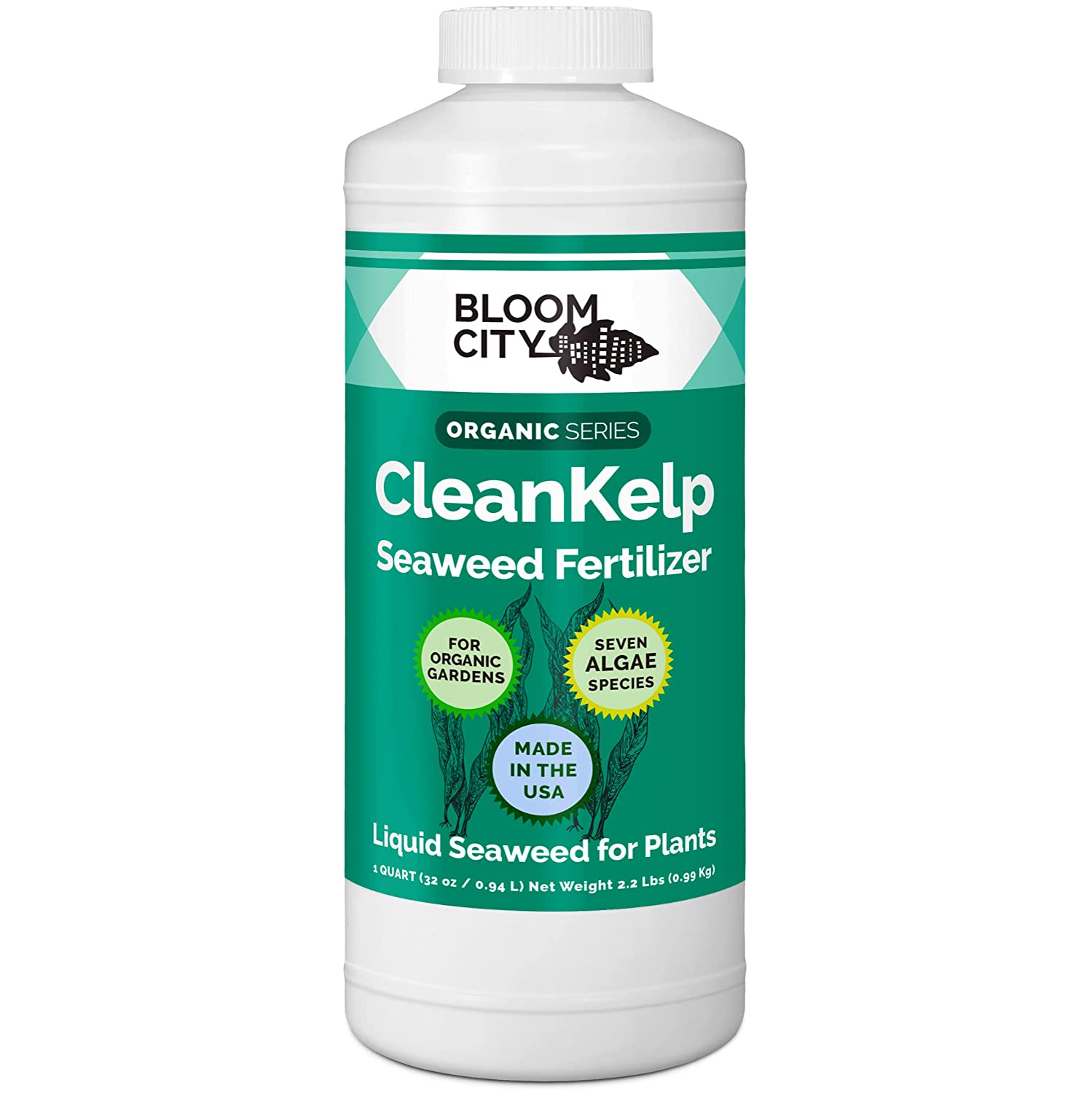
- Boosts Blooming with Natural Cytokinins
- Enhances Root Health and Growth
- Packed with Essential Nutrients
- Eco-Friendly and Sustainable
Optimal Fertilizing by Growth Cycle
Orchid flowering seasons vary significantly by species. For example:
- Phalaenopsis typically bloom winter-spring
- Cattleyas often flower spring-fall
- Dendrobiums may bloom summer-fall
General Fertilizer Guidelines:
✔ Active Growth (Leaf/Root Development):
- Use balanced fertilizer (20-20-20) weekly at 1/4 strength
- Applies to most orchids putting out new leaves/roots
✔ Flowering Phase:
- Switch to bloom booster (10-30-20) when spikes appear
- Exception: Some species (like Phalaenopsis) need year-round balanced food
✔ Dormant/Rest Periods:
- Reduce feeding to monthly for deciduous types (e.g., Catasetum).
- Evergreens (like Phals) still need light feeding in winter.
Always research your specific orchid's natural cycle - For your orchid's exact flowering season, consult:
American Orchid Society Care Sheets or the IOSPE Species Database.
Monitoring & Treating Unhealthy Orchid Roots
Monitoring orchid roots is also essential in ensuring their health. It is best to grow orchids in see-through containers, so that you can always monitor the root system. The preferred method of many orchid growers is to place the orchid in its growing medium in a see-through plastic container that can be placed inside a decorative pot or vase.
Phalaenopsis and Vanda roots are easy to monitor, and we can determine when to water by observing the color of the roots. Dry roots are usually grayish, while saturated roots turn green.
Healthy vs. Unhealthy Orchid Roots
- Healthy orchid roots: Plump, green/silver, firm.
- Unhealthy roots: Brown, mushy, or papery.
Quick Fixes for Unhealthy Roots:
- Root rot? Trim dead roots, repot in fresh mix.
- Dehydrated? Soak in water + seaweed extract. See more about orchid root care here.
Repotting for Healthy Orchid Roots
Growing medium's break down over time, so it is recommended to replace it every year or two. When repotting your orchid, trim away any dead roots, which are brown and lifeless. In other orchid species, healthy roots are typically white, although root colors can vary. Dead roots typically look brown and dry, and if you observe a lot of roots like this, it is time to remove the orchid from the medium, trim away the dead roots, and repot it. Use a fresh growing medium designed for your species of orchid and a slightly larger container if needed.
When to Repot for Healthy Roots?
- Medium breaks down (usually every 1-2 years).
- Roots outgrow the pot.
- Signs of mold or decay.
Step-by-Step Repotting
- Soak roots for easier handling and root flexibility.
- Trim dead roots with *sterilized* scissors.
- Use fresh mix match orchid type - see the table above.
- Stabilize in a slightly larger pot.
Recommended Pots: Clear Orchid Pots with Ventilation (Monitor healthy orchid roots easily). See our guide on orchid care repotting for more information.
Final Tips for Healthy Orchid Roots
- Always use a well-draining mix—no soil!
- Water with pure water (rain, filtered, or RO).
- Fertilize weakly but weekly for steady nutrients.
- Repot every 1-2 years to refresh the medium.
In summary, to ensure healthy orchid roots, choose the right growing medium, use the right water source, and monitor the root system regularly. With proper care, your orchids will thrive and bring you joy with their beautiful blooms.
We hope you found this information useful and if you like Heavenly Orchids, please join our mailing list for monthly updates.




